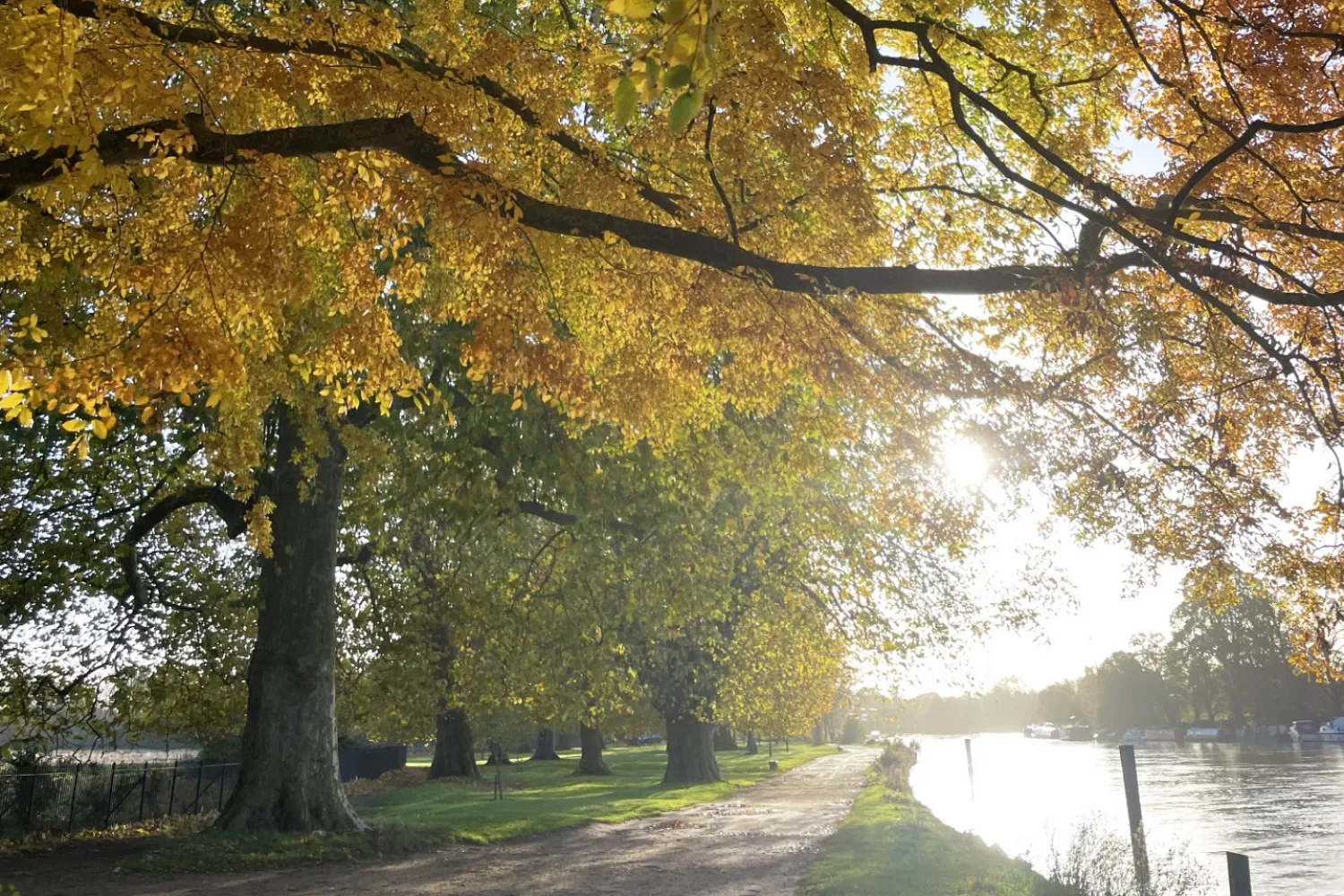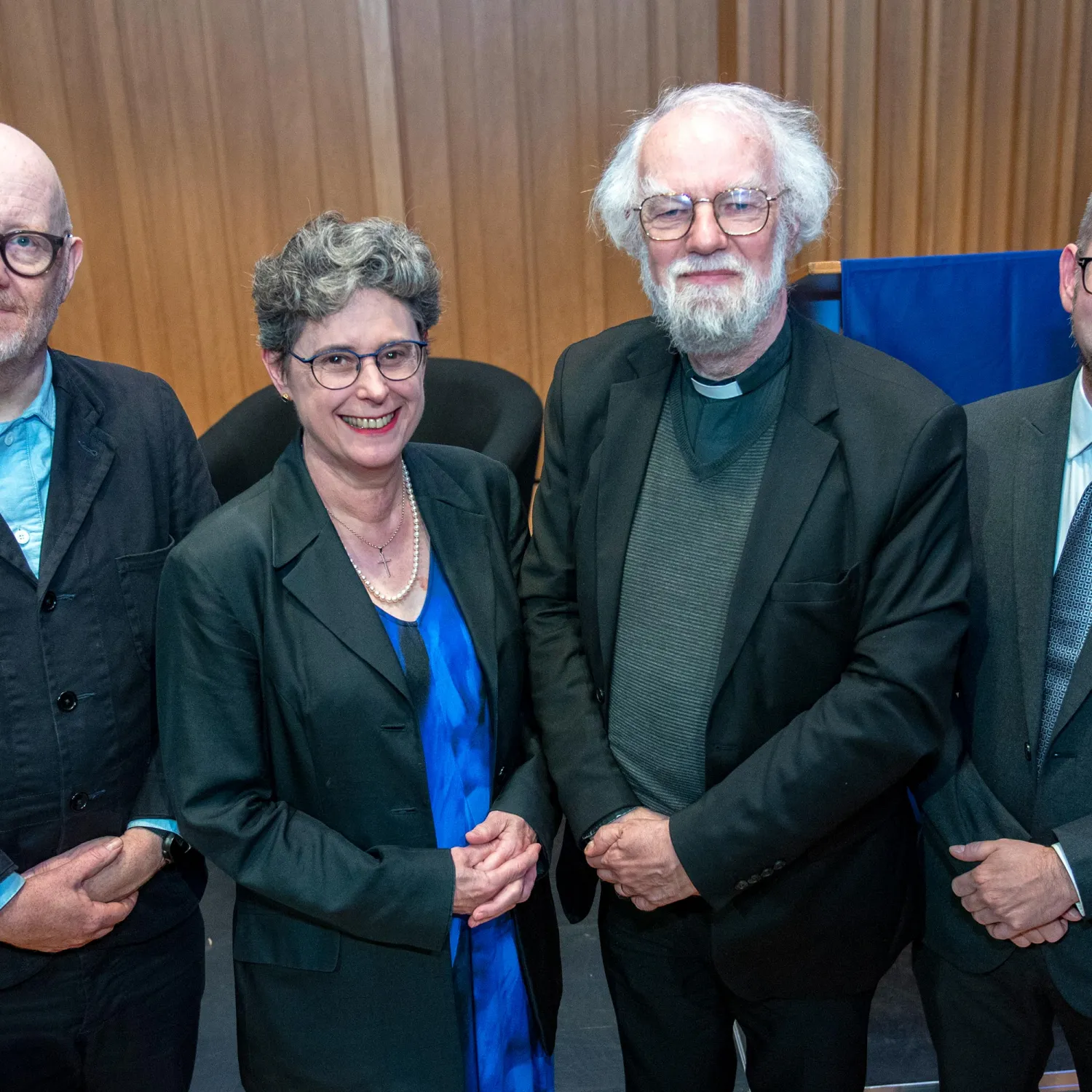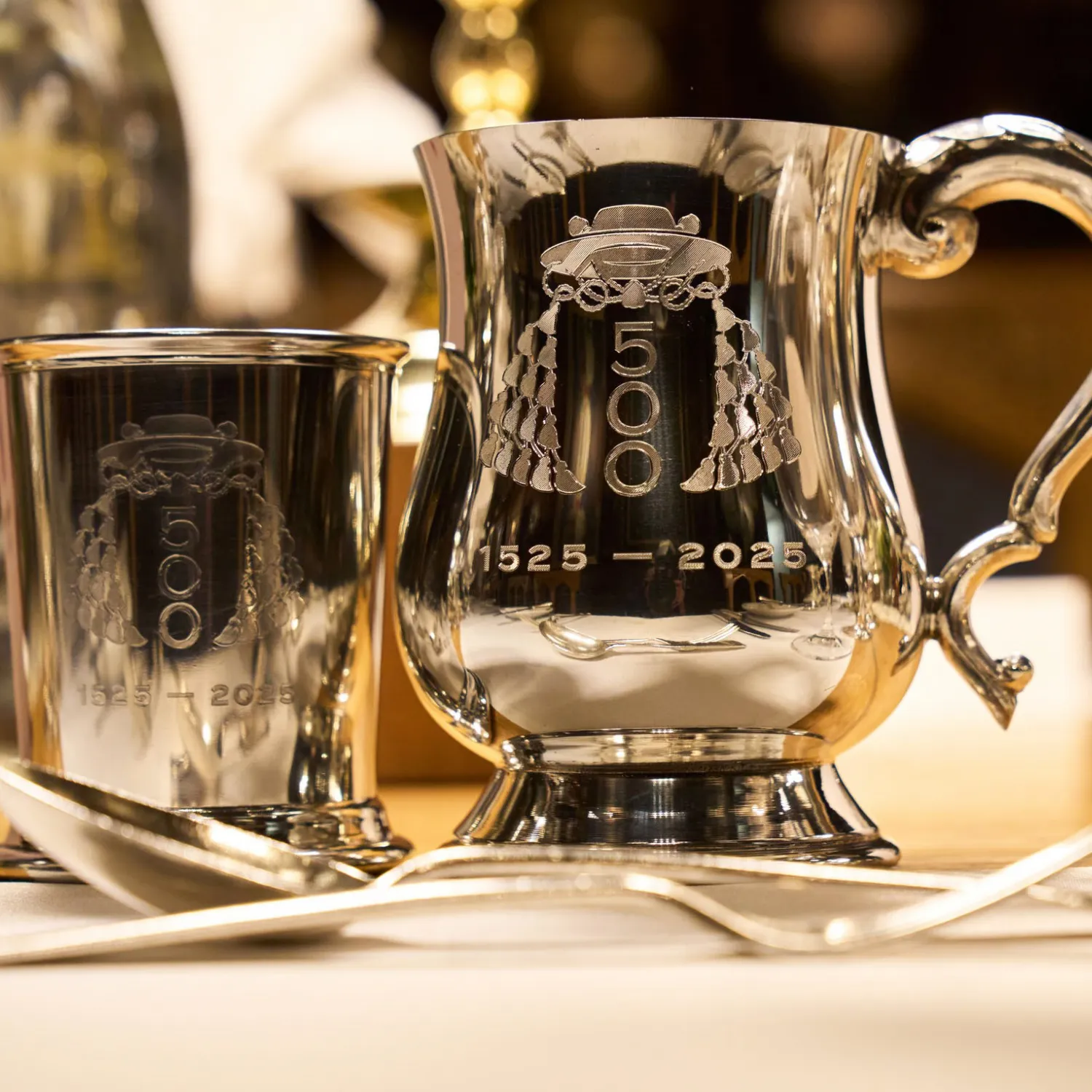Breadcrumb
Christ Church in colour
As 2023 draws to a close, our Head Gardener John James surveys the particularly vibrant autumn colours on display in our Meadow and gardens in recent months.
Despite (or maybe it’s because of) the lack of frosty weather, many of the autumn colours seen recently around the College and Meadow have been quite spectacular. Plant leaves change colour as day length decreases and temperatures start to drop: the green food-making chlorophyll in the leaves stops being made by the plant, revealing the other chemicals such as yellow flavonoids, orange carotenoids and red anthocyanins. These chemicals, which are normally masked by the green chlorophyll, are responsible for things like UV filtration, nitrogen fixation, and floral pigmentation.
In recent years our policy for tree planting around the Meadow has concentrated on adding to the seasonal interest, particularly autumn colour, as although we have many magnificent mature trees, many such as the Oriental and London Planes and Horse Chestnuts do not produce any autumn colour of note, and it’s now been very pleasing to see some of our newly planted trees bringing colour around the Meadow to add to those mature trees such as the Zelkovas that do have good autumn colour.
Below you can see a young specimen of the disease-resistant elm Ulmus 'Sapporo Autumn Gold' living up to its name on the Dean’s Ham.
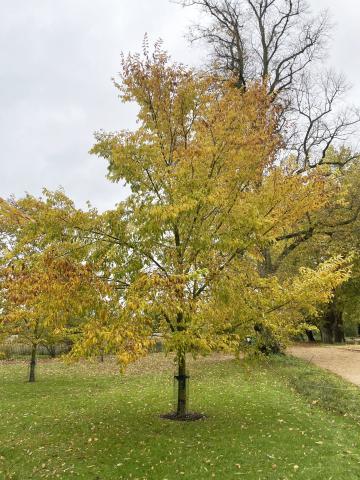
It looks like we were lucky that this young Red Oak (Quercus rubra, pictured below) planted by the River Cherwell has such a strong autumnal leaf colour.
It was also a delight to see this magnificent mature specimen of Japanese Zelkova (Zelkova serrata) giving a sunlit golden glow to the south end of New Walk.
The deep crimson foliage colour of the Pin Oak (Quercus palustris, pictured below) planted just to the south of the work compound off New Walk two years ago is second to none.
Autumn leaf colour is very variable and depends upon so many things. A tree that colours up well one year may not do so well the next due to climatic factors such as temperatures and moisture levels. Due to genetic variation every tree of a particular species will vary in its colours, and every leaf on a tree will colour up differently and at different rates, giving us the variation that we all enjoy seeing.
Below you can see the significant variation in leaf colour on the plants of Japanese Maple, Acer japonicum ‘Aconitifolium’ in Blue Boar Quad.
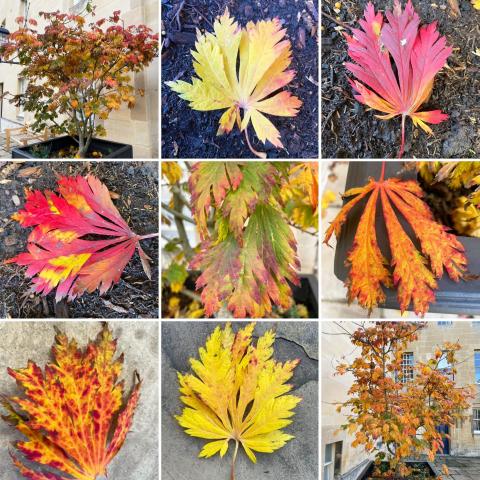
There is also a great range of colours displayed by the Persian Ironwood (Parrotia persica) in the Masters Garden.
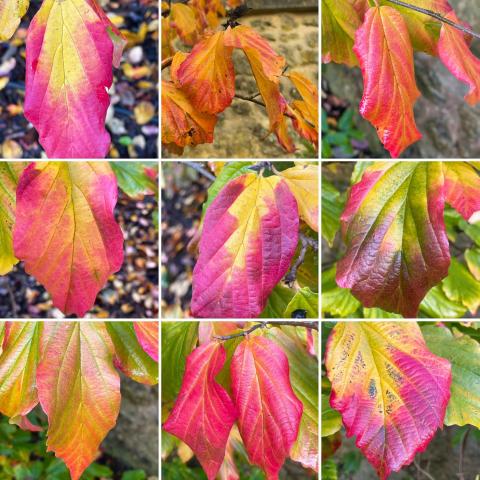
For more images of our gardens and Meadow, visit John James' Instagram page, @ChristChurchGardener.
Other Christ Church news
